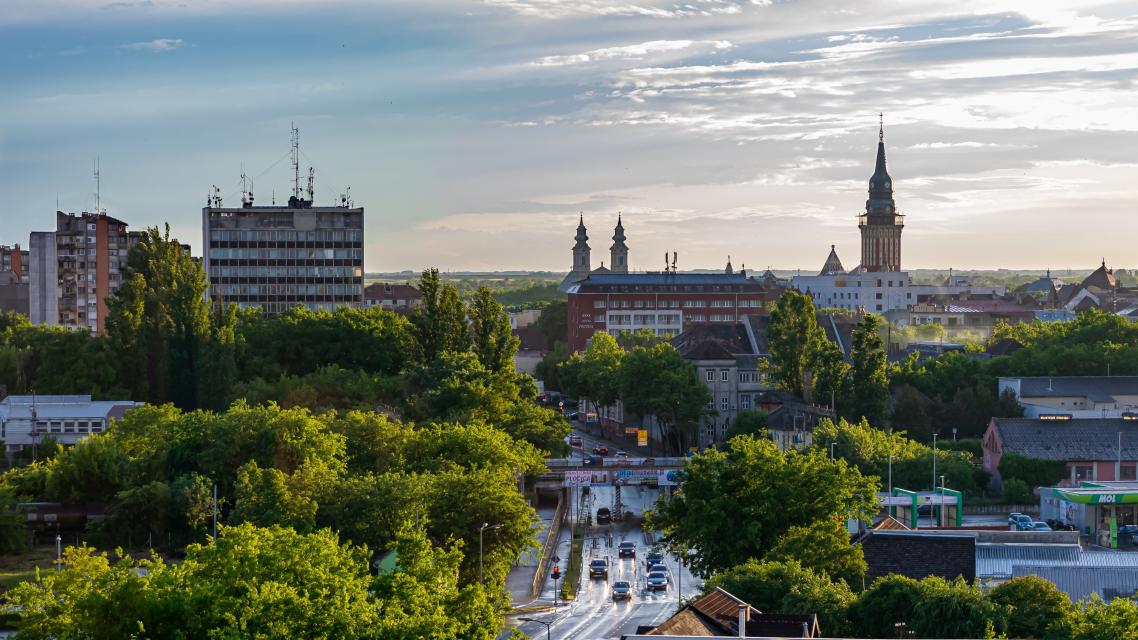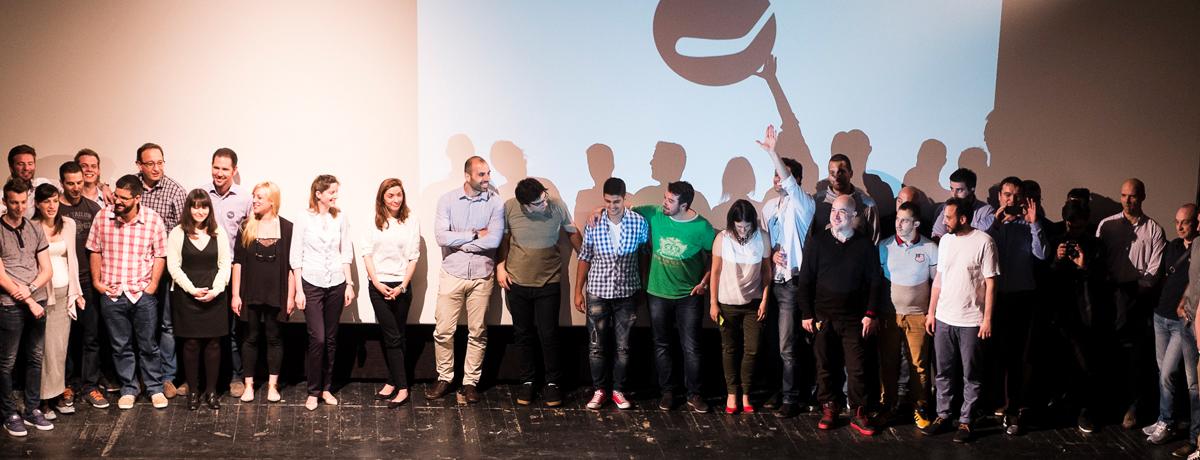Finding Their Own Path Forward: Part 1
Eastern and Central Europe has become one of the most important regions for GIST to work in over the past decade, and just about anyone interested in the cutting edge of innovation should be interested in this place as well. From the recent close of our pioneering pre-accelerator training program GIST Innovates Ukraine, our Belarusian alumni acquiring funding, to the many Innovation Hubs we support throughout the region, we have been inspired by the incredible vision and ambition present in the young innovators in this space. What exactly is it that makes them so unique? Read on to find out why much of the future will be born in this exciting region.
This region, with places as diverse as Ukraine to Kosovo, is characterized by a few specific historic and socioeconomic considerations that make it particularly unique compared to the West. Chief among these is the transition in geopolitical space from belonging to the Soviet sphere to carving a unique identity for itself. The Soviet legacy leaves behind a culture with deep investments and engineering know-how in science and technology, along with a focus on higher education. These attributes are being utilized today in new ways, being coupled with the latest advancements in wireless technology and computer science, as well as energy. The Soviet legacy of STEM is meeting a unique youth culture that brings a fresh perspective to a new era. The newest wave of innovation from this region views opportunities as being universal, seeing their innovation ecosystem as being part of a new global movement; they are rejecting the bureaucracies that have limited transformative growth and finding new paths forward. The best innovators in this region are tapping into this fusion, recombining the new with the old into a new model we all can learn from.
We can look from the whole region to more specific countries and areas as we learn exactly what makes this place so unique, starting first with Ukraine.
Ukraine is perhaps the country that most represents this hybridity within the region. With the culmination of our second Ukrainian Innovates program, we feel closer than ever to the incredible work being done here. We have been absolutely amazed by what we’ve seen: from Krovospas , a next-generation hemostatic agent and a range of devices that stop arterial bleeding within moments, to Carbopulse, a firefighter health monitoring system, the startups that have participated in this program are on the forefront of some life-changing technologies.
Our acceleration program is just one of many that are revealing great software and hardware startups in space tech, agrotech, science, medicine, logistics, AI and Blockchain to name a few. The growth of the tech sector in Ukraine alone is more than 25% year-on-year in terms of revenue. The nearly quarter million developers in the country are joined by almost 20,000 fresh graduates annually from IT schools and universities. The Ukrainian IT sector is one of the top three export services (after agriculture and goods processing), contributing about 8.3% of the GDP. As it advances into the 21st Century, Ukraine is positioning itself as the premier expert in Artificial Intelligence; according to the 2020 Oxford Government AI Readiness Index, Ukraine is currently the number one Artificial Intelligence provider in Eastern Europe with 150 recognized providers. This represents a strong base to expand upon; anticipated progress within the AI industry over the coming decade will presumably be even greater. Ukraine's success in the coming era is undeniable, and if our current crop of innovators is any indication, the future is bright.

Image: Kyiv, Ukraine
Poland is right on their way as well in this regard, as global confidence in the region has also become more and more apparent. According to PFR Ventures, VC investment in Poland's startups came from 85 different VC funds internationally and reached €294 million in 2019, more than in the nine years beforehand combined. By 2030, the McKinsey Report predicted the economy could grow to €890 billion by 2030. Poland’s economy has matured to a point that it's no longer about trying to catch up with the leaders in Europe, or waiting for the next injection of EU support: Poland is now charting its own path of development.
This development is multidisciplinary, showing exciting advancements in many fields as well as advocating in practice for new forms of integrated innovation development.
One recent innovation is in new integrated forms of healthcare, like in the development this summer of the Warsaw Health Innovation Hub (WHIH), which will bring together leading global medical, pharmaceutical, and biotechnology companies with the public sector as a first step towards the creation of a Polish Medical Valley inspired by and modeled on medical clusters in other parts of Europe. A joint initiative between the Medical Research Agency, EIT Health and key global players in the industry including AstraZeneca, Microsoft, Polpharma, Roche, and the Hub will be focused on driving innovation in three key areas: in pharmaceuticals, in the field of medical devices, and in digital health solutions.
We also see Poland as being on the vanguard of solar power adaptation; in five years, Poland went from having only 187 megawatts (MW) in installed photovoltaic capacity to 3,935 MW in 2020 thanks in part to the boom in rooftop installations. Last year, the country of 38 million saw 155 percent growth in the sector, compared to a worldwide average of 22 percent, according to the International Renewable Energy Agency (IRENA). Together, these trends and statistics paint an enticing Polish future, one that focuses on growth deeply tied to human-driven innovation.
The Baltics
At the cutting-edge of digital communications technology and cybersecurity, we can look to the Baltics as world-leaders. While often overlooked, the ecosystem for entrepreneurship in science and technology in Estonia and Latvia is very robust; despite the impact of the Covid-19 pandemic, investment in the region’s start-ups has rebounded in 2020 following a reduction in funding in 2019. According to a new report from Startup Wise Guys and EIT Digital, in the first half of 2020 the region saw significantly more funding than the same period of last year. Optimism among Baltic startups is on the up too: of the startups surveyed for the report, 75 per cent said they have a positive outlook on profitability in the next three years. This culture also happens to be incredibly diverse; the majority of persons employed in science and technology were women, the highest share being in Lithuania and Latvia, with 63.7% and 62.9% respectively. Estonia was also ahead of the average with 59.5% of science and technology workers being women. Latvia is exemplary in this; Latvian female labour force participation rate is high; almost two thirds of higher education institution graduates are women; close to 60% of doctoral degrees are awarded to females, and it has one of the highest proportions of female managers in the European Union. While impressive, the best might be still to come. Latvian women have risen to the top in business as well as the public sector much more than in the entrepreneurial sector. This suggests that there is an untapped entrepreneurial potential in Latvia.

Image: Tallinn, Estonia
Among the Baltics, Estonia has spent the last two decades cementing its status as the world-leader in digital communications and cybersecurity; according to the 2020 United Nations e-government survey, it is one of the three most digitally advanced countries in the world, alongside Korea and Denmark. While famously the home of former startups like Skype, the reliance on digital communications goes even deeper. Every Estonian is given a unique digital identity, one that is part of much of how their society operates. Using a digital identification card and a secure electronic signature, people in Estonia can bank, apply for government assistance, file for sick leave, order prescriptions, and get medical care online. Citizens can also use their ID cards to vote securely from the comfort and safety of their homes, as they have done since 2005; in the most recent parliamentary elections in 2019, 43 percent of voters cast ballots online. They were the first country in the world to pioneer digital elections, and they have done so by also prioritizing digital privacy and safety, being a world leader in these increasingly important industries. This also carries over to education, where ‘educational technologists’ are utilized, the basis of a decade old effort to deploy digital pedagogy gurus to schools in order to bridge the gap between “the learning world and the technological world.” In this focus on digital alternatives to “IRL” contact, Estonia was uniquely positioned to adapt well to the Covid crisis, allowing essential activities and connection to take place relatively unencumbered, while the rest of the world is only now catching up to how essential digital networks can be, particularly in times of crisis.
South Eastern Europe

Image: Subotica, Serbia
GIST is proud to support a number of Innovation Hubs coming out of southeastern Europe, particularly those in former Yugoslavia. Despite the challenges of the last decades, this region is on the cusp of an incredible transition, with a new generation of future entrepreneurs inspiring us every step of the way. In Bosnia and Herzegovina, BH Futures Foundation is leading the way: it was founded in 2015 with a clear goal - to empower the youth of their country through leadership, education, and technology. They have been busy! Around 70 scholars have gone through their scholarship program since its founding, and they have organized over 60 different events, opened a Makerspace, and grown to the largest mentorship program in the country with more than 200 students involved, developing their IT/STEM skills/careers. Their first Makerspace was opened in Srebrenica, a small town in Eastern Bosnia. It was built there with the goal of enabling a prosperous and innovative future for the youth of this small community. This town is unfortunately known for hardship during the war, and they are working to change that by bringing as many positive associations to the town as possible through spurring innovation. The advances will continue as they plan on having 25 Makerspaces opened by 2025.
In Belgrade, our Serbian IHub Startit is pursuing transformative initiatives; with a team of experienced staff, a network of more than 100 mentors, and 500 events and projects that have reached more than 100,000 people from Serbia, it has established itself as a preeminent hub for youth entrepreneurship, education, social activism, and networking.
In Kosovo, ICK is on a mission to develop a culture of innovation; they have 390 startups in their network with over 450 products developed; these startups have created over 2,100 new jobs in the tech industry.
Elsewhere in Southeastern Europe, Protik is making waves in Albania, where they have organized over 15,000 activities with more than 25,000 participants.
We can also look to places like North Macedonia, where innovators are doing incredible things; from advances in artificial intelligence like GIST award-winner Elevate Global, to the work of Startup Macedonia building a robust national ecosystem, there is lots to look forward to from young entrepreneurs in this region.
Altogether, these combined efforts illustrate an incredible shift underway, where a new generation of entrepreneurs is bringing a whole new perspective to the innovation landscape, in places where they can make a real difference.
Stay tuned for more content about this incredible region and updates on the work GIST is doing here and around the world.

Image: Startit Participants


